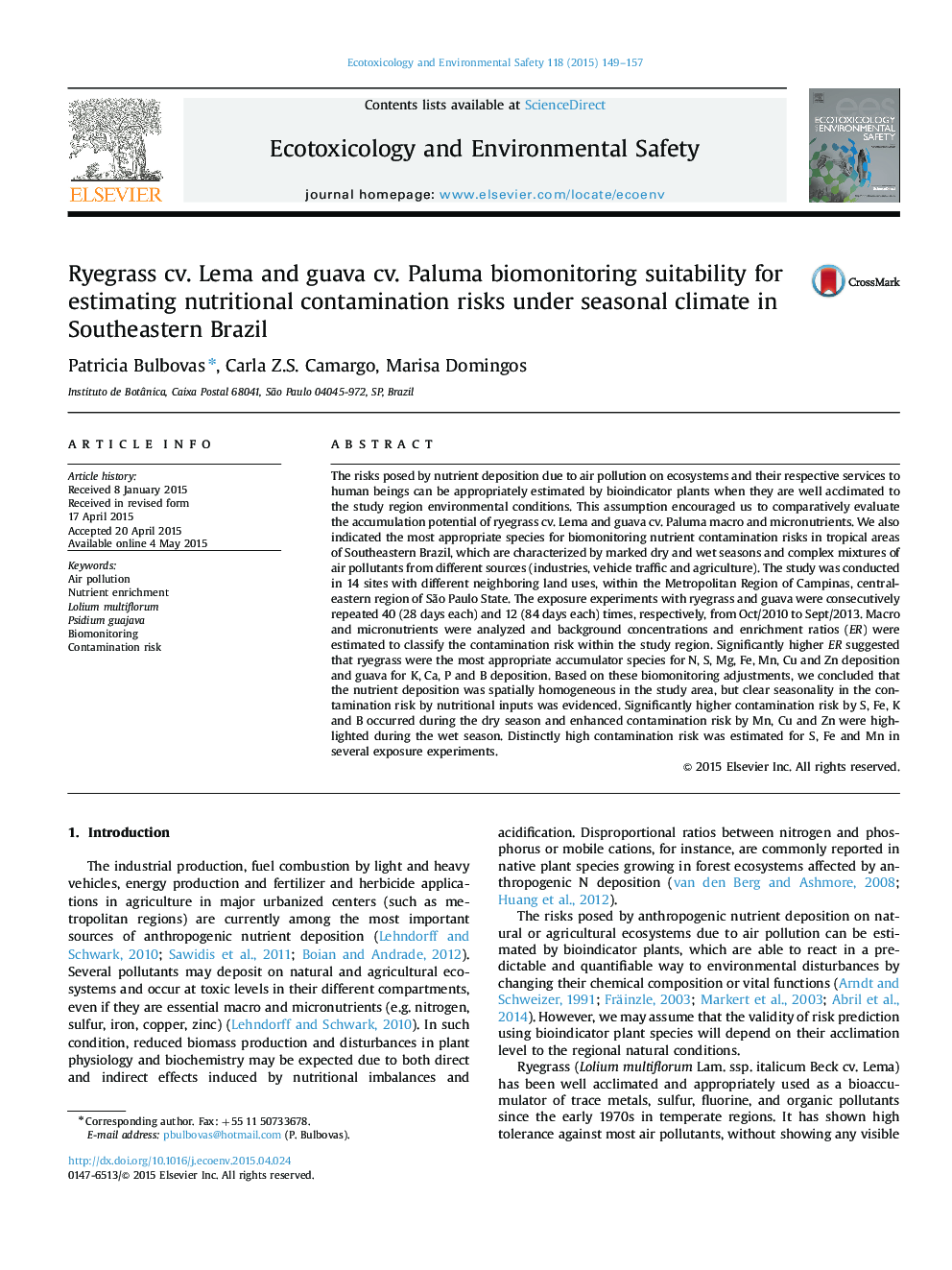| کد مقاله | کد نشریه | سال انتشار | مقاله انگلیسی | نسخه تمام متن |
|---|---|---|---|---|
| 6312100 | 1618945 | 2015 | 9 صفحه PDF | دانلود رایگان |
عنوان انگلیسی مقاله ISI
Ryegrass cv. Lema and guava cv. Paluma biomonitoring suitability for estimating nutritional contamination risks under seasonal climate in Southeastern Brazil
دانلود مقاله + سفارش ترجمه
دانلود مقاله ISI انگلیسی
رایگان برای ایرانیان
کلمات کلیدی
موضوعات مرتبط
علوم زیستی و بیوفناوری
علوم محیط زیست
شیمی زیست محیطی
پیش نمایش صفحه اول مقاله

چکیده انگلیسی
The risks posed by nutrient deposition due to air pollution on ecosystems and their respective services to human beings can be appropriately estimated by bioindicator plants when they are well acclimated to the study region environmental conditions. This assumption encouraged us to comparatively evaluate the accumulation potential of ryegrass cv. Lema and guava cv. Paluma macro and micronutrients. We also indicated the most appropriate species for biomonitoring nutrient contamination risks in tropical areas of Southeastern Brazil, which are characterized by marked dry and wet seasons and complex mixtures of air pollutants from different sources (industries, vehicle traffic and agriculture). The study was conducted in 14 sites with different neighboring land uses, within the Metropolitan Region of Campinas, central-eastern region of São Paulo State. The exposure experiments with ryegrass and guava were consecutively repeated 40 (28 days each) and 12 (84 days each) times, respectively, from Oct/2010 to Sept/2013. Macro and micronutrients were analyzed and background concentrations and enrichment ratios (ER) were estimated to classify the contamination risk within the study region. Significantly higher ER suggested that ryegrass were the most appropriate accumulator species for N, S, Mg, Fe, Mn, Cu and Zn deposition and guava for K, Ca, P and B deposition. Based on these biomonitoring adjustments, we concluded that the nutrient deposition was spatially homogeneous in the study area, but clear seasonality in the contamination risk by nutritional inputs was evidenced. Significantly higher contamination risk by S, Fe, K and B occurred during the dry season and enhanced contamination risk by Mn, Cu and Zn were highlighted during the wet season. Distinctly high contamination risk was estimated for S, Fe and Mn in several exposure experiments.
ناشر
Database: Elsevier - ScienceDirect (ساینس دایرکت)
Journal: Ecotoxicology and Environmental Safety - Volume 118, August 2015, Pages 149-157
Journal: Ecotoxicology and Environmental Safety - Volume 118, August 2015, Pages 149-157
نویسندگان
Patricia Bulbovas, Carla Z.S. Camargo, Marisa Domingos,